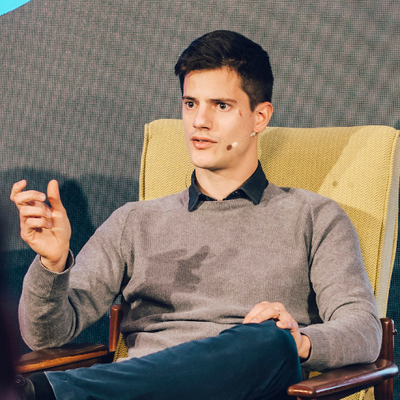Finding Balance Between Async Workflows and Social Bonding
 Sergio Pereira
Sergio Pereira
"My remote team was exhausted with meetings.
So we implemented async workflows to replace most of those meetings.
Now I feel a lack of social bonding in the team. What can we do better?"
A fellow CTO asked me over DMs last week.
Tips for Making Async Workflows and Social Bonding Work Hand in Hand
- Be prepared to see colleagues less when you go more async.
- Cut down any unnecessary meetings.
- Foster social activities like hobbie fridays, lunch hours, etc.
How To Tie Together Async Workflows and Social Bonding
 After years of experience managing remote teams, here's what I replied to the fellow CTO.
After years of experience managing remote teams, here's what I replied to the fellow CTO.
The Tradeoff
 Social bonding is a common challenge in remote teams.
Social bonding is a common challenge in remote teams.
The more async you go, the less you'll see your colleagues face to face. That's a tradeoff to make.
It's important to be intentional in nurturing the type of culture you want to see in your teams.
This recent thread describes what I did in the last company I co-founded. Most of us never met each other in person during that tenure (due to lockdowns) and we had great friendships created in the team.
While that team felt very socially bonded, many employees reported burnout, exhaustion, and lack of time to have lunch.
Most teams still had too many meetings and we worked hard to reduce those by making some workflows async.
Meetings + diff time zones is a hard equation!!
Async Workflows and Social Bonding
 As teams go more async and ditch meetings, almost totally you get a team that feels more "freelance-y", with interactions that feel more transactional.
As teams go more async and ditch meetings, almost totally you get a team that feels more "freelance-y", with interactions that feel more transactional.
In fully async, it is very challenging to build social bonding. You need to foster some of those social activities, retreats, etc.
Gumroad is a fully async company, with a team of 100+ people spread across the globe. There, everyone is a contractor and part-time.
In their wiki, they document as a "Not so good" thing the fact that there isn't much socialization.
I'm not an Async maximalist myself. I call my workflows "Async-by-default".
What it means:
- Zero scheduled internal meetings
- Workflows are async
- Exceptions may require work meetings for collaborative discussion
- Social bonds are built over social meetings and retreats
An example of such an async workflow in my teams is planning new features for development.
It used to cost my teams a huge amount of meeting time, and now it's fully async for 80% of the new features, and partially async for the remaining 20%.
I'm launching the course "Mastering Remote Work" soon. I'll dive into the trade-offs between async-first processes and social bonding I learned from managing remote teams around the globe.
Join the waitlist for early access and a 30% discount!
Follow me for more knowledge about remote work
I’ll be publishing new articles every week, and new social media content every day. If you enjoyed this article, follow me on Twitter or Linkedin, and stay in the loop. Share my content and drop a comment there. Let’s help more people learn about remote work.
Subscribe to my newsletter
Read articles from Sergio Pereira directly inside your inbox. Subscribe to the newsletter, and don't miss out.
Written by

Sergio Pereira
Sergio Pereira
I am Sergio Pereira. I’ve been building technology for the last 15 years, and I’ve worked as a Startup CTO since 2014. I love Startups, and love to work with Founders to transform their promising business idea into a product shipped to fulfil that market opportunity, and then help them grow from a nimble operation into a fully fledged company aimed for scale. I’ve been a Startup CTO for 8 years, twice as a co-Founder. And I’ve worked with more than 10 startups as a Fractional CTO. For the last few years I've been focused on Fintech. I launched Income Share Agreements for the first time in Europe, and deployed a successful solution to alleviate the student debt burden in the US. As a Fractional CTO I’ve worked with companies in payments, lending APIs, KYC/AML funnels, NFTs and other Fintech use cases. I’ve also worked with startups in eCommerce, HR, Legal and other fields, despite my focus in Fintech. When it comes to technology I’m “stack agnostic”, as I’ve worked with multiple stacks (Javascript, Java, Python, Ruby, PHP, Solidity), cloud providers (AWS, Azure, GCP, Heroku) and tools. I usually evaluate the constraints and trade offs and decide on the best stack for each specific company context and situation. I’m very bullish on remote work. I have worked remotely since 2017, and have been building remote teams since then. Hiring and managing engineers is one of my specialties, and finding the best talent around the world became also a passion. Embracing a global talent pool has been a key competitive advantage for me as a Startup CTO, and I’ve evolved my async processes to make my teams more performant and inclusive. Some of my duties as a Startup CTO: Engage closely with Founders to understand the company’s business goals and priorities. Own tech roadmap, cost structure and discuss scope<>cost trade offs with Founders. Own recruiting. I source, interview, hire and onboard engineers, designers, data scientists, etc into my teams. Manage day to day tech delivery, from feature specs, to managing engineers and coordinating releases. Engage with external stakeholders (clients, partners, vendors, investors) as needed for due diligence, integrations, etc. Lead compliance and security, usually high stakes in the Fintech space